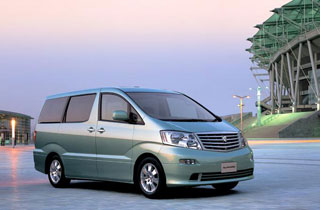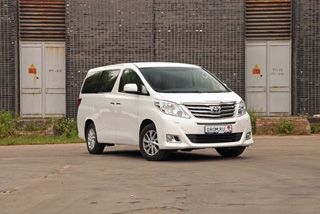Toyota Alphard test drive since 2002 Minivan
Toyota Alphald car review
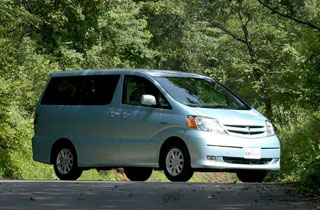 General
General A hybrid model was added to the Toyota Alphard - high -class minivan. Its main feature is that in the urban driving mode, the fuel consumption of 5.81 l/100km will reach. This is better by 83% than that of an all-wheel drive modification with a 2.4-liter engine, and 100% (2 times) than that of an all-wheel drive modification with a 3-liter engine. Due to the difference in equipment, it is impossible to calculate the net fee for hybridization, but according to approximate calculations, for a 2.4-liter all-wheel drive modification, the price increase was about 500 thousand yen (~ $ 4600). For those who spend more than 200 thousand yen per year on gasoline, such a calculation means that invested funds can be returned in several years. It turns out that a hybrid can be talked not only in relation to ecology, but also in relation to the economy.
Alphard uses the same platform with Estima, so if you use systems for the Estima Hybrid model, then hybridization is possible without special modernization. As expected, the hybrid version of Alphard appeared with a lag behind the hybrid model of Estima for about two years.
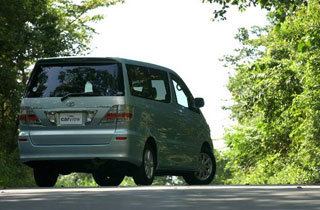 It was assumed that this would be a machine in which the alpha’s skin is stretched on Estima Hybrid, however, the location of the batteries moved from the site under the third number of seats, as was the case with Estima Hybrid, to the site under the driver’s and front passenger seats.
It was assumed that this would be a machine in which the alpha’s skin is stretched on Estima Hybrid, however, the location of the batteries moved from the site under the third number of seats, as was the case with Estima Hybrid, to the site under the driver’s and front passenger seats. Of course, the principal system has remained unchanged, according to which two electric motors join the 2.4-liter gasoline engine. However, when the accumulator’s location changes, the configuration of the wiring changes significantly, and the shape of the floor panels should also be changed. Therefore, I was just amazed when I heard: the fact is that the batteries are moved forward. But after studying the salon, I managed to understand why the developers spent time to install them elsewhere.
Exterior and interior
At Estima Hybrid, the drive motor batteries were installed under the third row of seats, so the seats gliding amplitude were limited, and the method of folding was replaced with
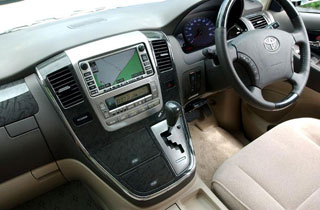 the rise to tipping up, which is why part of the luggage space was sacrificed. In addition, the 8-seater modification imposed such a restriction that the seats could not rotate and be located against each other. In this sense, the Alphard was completely the same location of places as on gasoline models. For the minivans, the location of the second and third row of seats is one of the most important points. And there was a great advance forward that no damage was caused to this.
the rise to tipping up, which is why part of the luggage space was sacrificed. In addition, the 8-seater modification imposed such a restriction that the seats could not rotate and be located against each other. In this sense, the Alphard was completely the same location of places as on gasoline models. For the minivans, the location of the second and third row of seats is one of the most important points. And there was a great advance forward that no damage was caused to this. However, in order to provide a place for the battery, a casing on the floor console was installed between the driver's and front passenger seats. Therefore, the through passage became impossible. For those who attach greater importance to such a pass, and not the location of the second and third row of seats, this becomes a change for the worst, but for them there are Estima. And in this sense, the power of Toyota is felt, which is famous for the perfect model number for all body types.
As for the appearance, the gilded lattice, which somehow contributed to Alphard sales, was replaced by one that gives the front part a modest expression. Personally, it seemed too luxurious to me and caused discomfort, so I want to welcome this change.
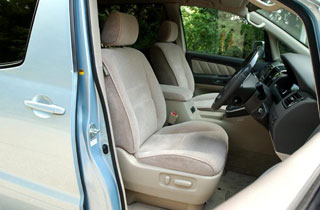 Performance
Performance The fundamental mechanism of the car got from Estima Hybrid - the original system of all -wheel drive, where, in addition to the drive motor for the front wheels, a drive engine for the rear wheels is installed, as well as the world's first brake system with electronic control. However, the surrounding equipment was improved by the battery power, the engine was improved, the efficiency of regenerative brakes and motor control was increased, a compressor was used for the world's first two -channel air conditioner with a motor and this ensured a further improvement in fuel consumption.
By the way, almost simultaneously a similar improvement was carried out with the Estima Hybrid model, changing fuel consumption from 5.56 l/100km to 5.38 l/100km. The fuel consumption in the urban mode was measured with the air conditioning turned off, so the effect of the new air compressor model was not turned on. It was announced that when using the air conditioner, fuel consumption increases by 15-20%, so in the summer the practical consumption should increase more than these numbers.
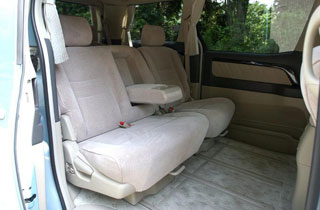 In Toyota Prius, after a soft turn on the accelerator, the engine does not turn on until 40 km/h reaches, and traffic in an electric car mode is maintained. However, in a heavier Alphard Hybrid, the engine turns on immediately if you do not carry out quite sophisticated operations with an accelerator. If you move out, then weaken the accelerator, turn off the engine and slowly press the pedal again, then with this method of movement you can drive in an electric car mode to a speed of 40 km/h, but compared to Prius, such a movement is carried out within a narrower limits. In the Prius, the drive motor is also a starter engine, but unlike it, Alphard Hybrid has a special motor for the starter, so even when the engine is turned on, vibration is not immediately transmitted. This is such a smooth start that if you do not look at the energy monitor, it is impossible to understand when the engine turned on.
In Toyota Prius, after a soft turn on the accelerator, the engine does not turn on until 40 km/h reaches, and traffic in an electric car mode is maintained. However, in a heavier Alphard Hybrid, the engine turns on immediately if you do not carry out quite sophisticated operations with an accelerator. If you move out, then weaken the accelerator, turn off the engine and slowly press the pedal again, then with this method of movement you can drive in an electric car mode to a speed of 40 km/h, but compared to Prius, such a movement is carried out within a narrower limits. In the Prius, the drive motor is also a starter engine, but unlike it, Alphard Hybrid has a special motor for the starter, so even when the engine is turned on, vibration is not immediately transmitted. This is such a smooth start that if you do not look at the energy monitor, it is impossible to understand when the engine turned on. In addition to the engine, the starting acceleration is maintained by the front and rear engine, therefore it is very powerful. Compared to the Estima Hybrid model, the machine is heavier than two large men, but I did not feel the severity that arose because of this. Up to a speed of 100 km/h acceleration is carried out easily and smoothly. In addition, it is possible to restrain the engine speed on
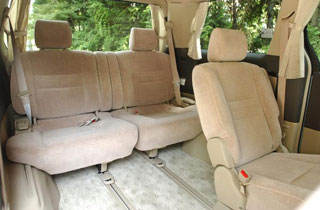 as low as the motors work. Therefore, excellent low noise is achieved, compared to models not only with a in-line 4-cylinder engine, but also with a V-shaped 6-cylinder engine. However, the sound of the engine with a strong press on the accelerator and an increase in revolutions is by no means pleasant. In addition, when the limits of 100 km/h are exceeded, the slow reaction of the car to work with the accelerator is striking. At this moment, it is felt that here you can give the leadership of a model with a V-shaped 6-cylinder engine.
as low as the motors work. Therefore, excellent low noise is achieved, compared to models not only with a in-line 4-cylinder engine, but also with a V-shaped 6-cylinder engine. However, the sound of the engine with a strong press on the accelerator and an increase in revolutions is by no means pleasant. In addition, when the limits of 100 km/h are exceeded, the slow reaction of the car to work with the accelerator is striking. At this moment, it is felt that here you can give the leadership of a model with a V-shaped 6-cylinder engine. On the special Fuji Speedway highway, we managed to try the operation of the electronic control brake system (ECB). Although it is called so simply, in reality it is a complex system that controls the features of the movement of the entire car. It carries out combined control of functions such as VSC, TRC (traction control), ABS (anti -lock brake system) with EBD and strengthening the brakes. On the asphalt road sprayed with water, car
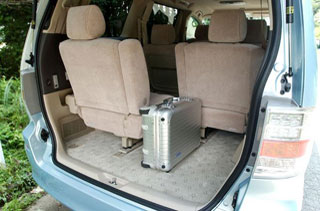 it rolls well. If you gradually increase the speed, then insufficient rotation occurs, however, the Alphard Hybrid remains on the intended line. If you increase the rotation of the steering wheel, then the inhibition of the wheels facing inside occurs, at the same time the power is discharged, a small arc is described, and the position is not violated even when the brake is pressed. The VSC system also has a similar function, but in this case there is a strong feeling that return to its original position is forcibly. In this case, the ERU system helps before the limiting values \u200b\u200bcontinues to control, so the movement in the bend becomes especially smooth, and during the entire turn there is a feeling of stable stability. In addition to this, the placement of a heavy battery (40 kg) is closer to the center of the car also contributes to dynamic qualities. Alphard Hybrid demonstrates a more solid and restrained operation of pedals than Estima Hybrid, and this is obvious, obviously, the difference in the location of the battery. Thus, Alphard Hybrid significantly overcomes generally accepted ideas about minivans not only in fuel consumption, but also in the field of dynamic characteristics.
it rolls well. If you gradually increase the speed, then insufficient rotation occurs, however, the Alphard Hybrid remains on the intended line. If you increase the rotation of the steering wheel, then the inhibition of the wheels facing inside occurs, at the same time the power is discharged, a small arc is described, and the position is not violated even when the brake is pressed. The VSC system also has a similar function, but in this case there is a strong feeling that return to its original position is forcibly. In this case, the ERU system helps before the limiting values \u200b\u200bcontinues to control, so the movement in the bend becomes especially smooth, and during the entire turn there is a feeling of stable stability. In addition to this, the placement of a heavy battery (40 kg) is closer to the center of the car also contributes to dynamic qualities. Alphard Hybrid demonstrates a more solid and restrained operation of pedals than Estima Hybrid, and this is obvious, obviously, the difference in the location of the battery. Thus, Alphard Hybrid significantly overcomes generally accepted ideas about minivans not only in fuel consumption, but also in the field of dynamic characteristics. 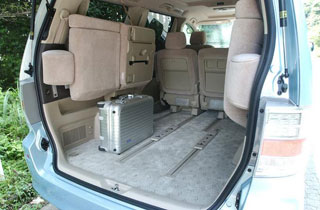
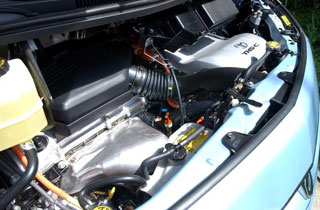
Source: CarView.co.jp








